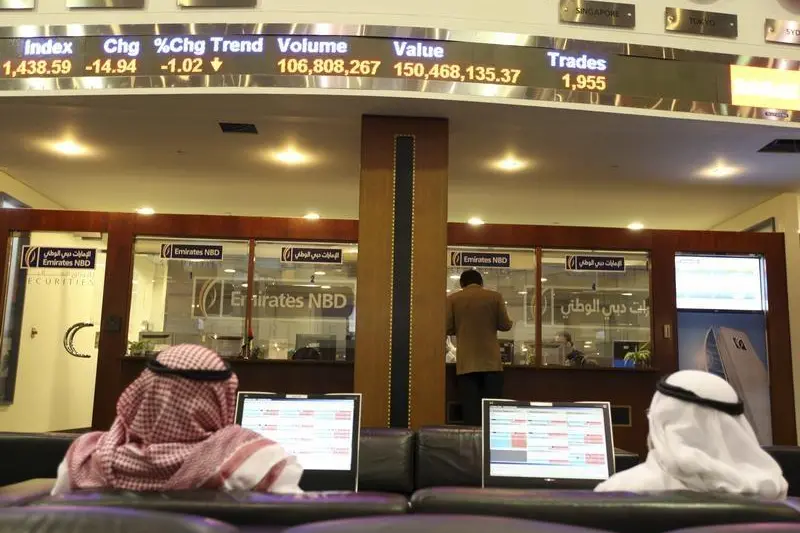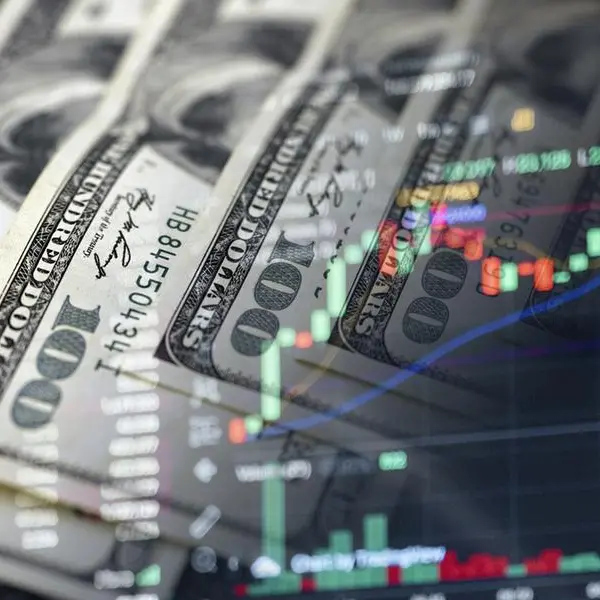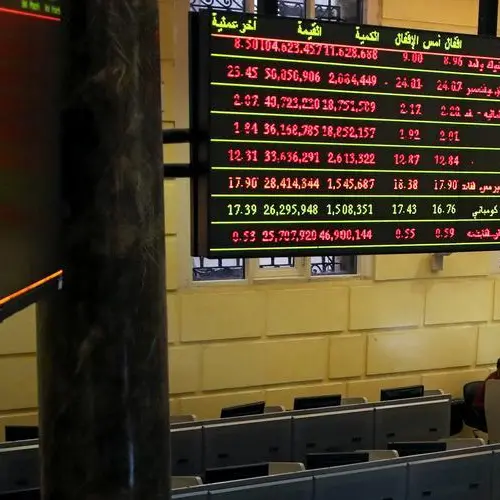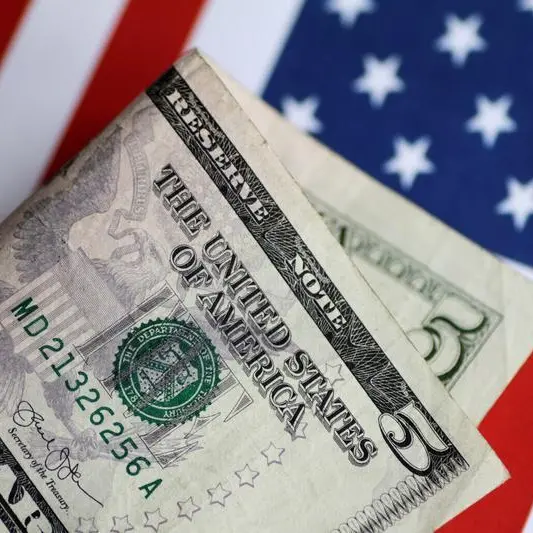PHOTO
Stock markets in the region dropped sharply in May as a plunge in oil prices and global markets weighed on investor sentiment. Trading activity was mainly subdued during the holy month of Ramadan.
The aggregate stock market index of the six Gulf Cooperation Council (GCC) countries + Egypt dropped 2.76 percent during the 31-day period.
Global equity markets and oil prices fell in May on escalating tensions between the United States and China, as U.S. President Donald Trump raised tariffs on $200 billion worth of Chinese goods to 25 percent from 10 percent.
Data from Eikon shows that Brent prices dropped 11.41 percent during the month, while the MSCI world index of global stocks fell 6.08 percent.
An analyst told Zawya though that he expects MENA markets to perform well for the remainder of the year.
“In general, Middle East indices are expected to have a decent performance in the year ahead due to the improving fundamentals,” Arun Leslie John, chief market analyst at Dubai-based brokerage Century Financial told Zawya by email.
“Emirates NBD Purchasing Managers’ Index for Saudi Arabia rose to its highest level since December, 2017 while for UAE it posted the best numbers since October, 2014. Both the numbers are in expansion territory and they are likely to support the equities,” he added.
Saudi Arabia
The Saudi stock market dropped the most in the region during the month of May, plunging 8.47 percent. It was the best performer in April when the index rose 5.5 percent.
A drop in insurance companies weighed on Tadawul during the month. Al Alamiya for Cooperative Insurance’s shares dropped 36.5 percent, Walaa Cooperative Insurance’s shares fell 27.1 percent while Salama Cooperative Insurance’s stock
“Clearly the woes of insurance sector are far from over with fundamental factors like slowing economic activity, competitive pressures and declining expatriate population still playing a role,” John said, adding that conditions are likely to remain challenging throughout the year 2019.
A Thomson Reuters index of Saudi banks shows that the sector’s index dropped 8.82 percent during the month. Banks account for almost half of the market capitalisation of the index.
“Nevertheless, we expect the liquidity fueled rally triggered by (the) inclusion in benchmark indices like MSCI and Russel to pick up steam in the month of June. The current dip is likely to be a buying opportunity,” John said.
Saudi Arabia’s stock market joined the MSCI emerging market index at the close of the trading session on May 28. (Read more here)
The Kingdom’s stock market was also added to the FTSE Russel secondary emerging market index on March 18 this year. (Read more here)
United Arab Emirates
Dubai’s stock market index dropped 5.3 percent in May, while Abu Dhabi’s index fell 4.84 percent.
A Thomson Reuters index of the Dubai real estate and construction sectors fell 7.01 percent during the period. Shares in Damac Properties dropped 30.65 percent, while Emaar Properties’ stock retreated 6.88 percent.
“Investors still seem finicky about the expected supply of real estate inventory this year and even though estimates vary all seem to agree that the numbers are huge,” John said.
“Real Estate accounts for almost one third of DFM (Dubai Financial Market) and the sector is likely to act as a drag on the index performance,” he added.
In Abu Dhabi, AXA Green Crescent Insurance, Eshraq Investments and Waha Capital weighed on the stock market index. The three companies’ shares dropped 18.67 percent, 14.5 percent and 12.02 percent respectively.
John said that he expects the Abu Dhabi market to “remain stable” as banks account for 65 percent of its market capitalization. “Especially, in view of the recent bank consolidation which is stabilizing the sector,” he ended.
Abu Dhabi Commercial Bank, Union National Bank and Al Hilal Bank merged at the beginning of May to create the third biggest bank in the United Arab Emirates. (Read more here)
In 2017, First Gulf Bank and National Bank of Abu Dhabi merged to create the largest bank in the UAE, First Abu Dhabi Bank. (Read more here)
Qatar
The Qatari index also failed to end the month in positive territory, dropping 1 percent during the period, with 30 stocks declining and 16 stocks adding gains.
A research note by the Kuwait Asset Management Company (Kamco Research) said that the real estate sector was the worst performer on the market, dropping 17.1 percent, dragged lower by shares in Ezdan Holding Group, which fell 30.44 percent.
Kamco added that the insurance sector was the second worst performer, dropping 7.9 percent and the telecom index was the third worst performer, falling 3.9 percent. Telecom company, Vodafone Qatar’s stock lost 8.55 percent.
Eikon data shows that an index of banks and financial services companies also dropped 2.5 percent during the period. Qatar National Bank, the Middle East's largest lender by assets, saw a 4.08 percent drop in its shares, while Commercial Bank of Qatar’s stock dropped 8.74 percent.
“Trading activity on the index was up m-o-m (month-on-month), as value traded during May 2019 increased by 87.8% to reach QAR 10.3 billion, while traded volumes improved by 55.1% m-o-m to reach 440 million shares,” the Kamco Research report said.
Egypt
Egypt’s blue-chip index EGX30 was the second worst performer in the region, dropping 7.7 percent just behind Saudi Arabia’s 8.47 percent plunge.
“The decline has been in line with the performance in markets regionally and globally,” Iyad Abu Hweij, managing director of Allied Investment Partners, told Zawya by email.
“Regional markets have been weighed down by subdued trading activity during the month of Ramadan, regional instability and renewed trade tensions between the US and China,” he added.
The index has still added 5.64 percent in the first 5 months of the year 2019, despite May’s sharp drop.
“We view the current market conditions and underlying events, which have pushed the Egyptian Market down, as temporary,” Abu Hweij said.
“Should trade talks between the US and China progress during the month of June, we expect to see a strong rebound in the regional markets,” he added.
Kuwait
Kuwait’s premier market index added 3.22 percent in May and was the only market to finish in positive territory.
“In terms of sector performance, the telecom index topped the monthly chart with a return of 9.3% primarily on the back of (a) 13.4% gain in (the) shares of Zain and 1% gain in (the) shares of Viva that more than offset declines in other two stocks in the sector,” Kamco Research’s note said.
“The technology sector was next on the chart with (a) gain of 7.1% followed by (the) real estate and consumer goods sectors with monthly gains of 6.8% and 3.6%, respectively,” the note added.
According to the International Monetary Fund’s (IMF) January report, Kuwait’s non-oil growth is projected to increase to 3 percent in 2019 and 3.5 percent in 2020, assuming that oil prices average $61.50 per barrel in 2019-2020 and $60.60 over the medium term.
At the end of May, Brent oil prices were trading near $64.5 per barrel.
Kamco Research’s report said that gains in Kuwait’s Premier market index “reflected investor expectations regarding the upcoming decision by MSCI in June-19 on Kuwait’s upgrade to the Emerging Market index.”
MSCI last year indicated that it may reclassify the Kuwaiti stock market from Frontier to Emerging Market as part of its 2019 Annual Market Classification Review. Kuwait will hear later in June if the upgrade will happen. (Read more here).
Oman
The Omani market edged 0.29 percent lower during the month of May.
“The market touched levels last seen in March 2005, almost at 14-year low,” Ayisha Zia Hassan Naseer, research analyst at Ubhar Capital, told Zawya by email.
Vision Insurance’s shares dropped 8.47 percent, while National Gas’ shares fell 10 percent and A’Sharqia Investment Holding’s stock retreated 7.5 percent.
“The ongoing holy month of Ramadan and geopolitical tensions affected the market in terms of reduced liquidity and trading,” Naseer added.
On April 19, ratings agency S&P Global cut its outlook on Oman to negative from stable, while affirming its debt score at BB.
Ratings agency Moody's downgraded Oman's sovereign rating to junk status in March this year. (Read more here).
“Oman’s construction sector, which has been facing challenges due to (an) economic slowdown and (a) delay in payments since the last few years, could breathe a sigh of relief as local banks, on directives from the Central Bank of Oman (CBO), have decided to give some relaxation in loan repayment,” Naseer said.
“We see this as a very positive development for the local construction sector, especially for the likes of companies, such as Galfar and Al Hassan Engineering, which have been under trouble because of heightened receivable issues,” Naseer added.
Bahrain
Bahrain’s stock market index was mainly flat in May, edging 0.03 percent lower.
Investcorp Bank was the top performing stock on the index, adding 10 percent, while GFH Financial Group Bahrain and Ithmaar Holding were the worst performers, dropping 6.42 percent and 5.71 percent respectively.
“Trading activity almost halved in May 2019, as volumes decreased by 52.5% m-o-m to reach 68.8 million shares from 145.0 million shares in April 2019. Value traded also declined 49.4% m-o-m and reached BHD 17.0 million from BHD 33.7 million in April 2019,” Kamco Research’s note said.
“The number of trades made in the exchange also decreased to 1,483 trades, down 31.8% m-o-m from April-19,” the note added.
Ratings Agency Moody’s changed at the end of May Bahrain’s banking outlook from negative to stable, noting that it expects the country’s real GDP to increase to 2.1 percent in 2019 from 1.8 percent last year.
(Reporting by Gerard Aoun; Editing by Mily Chakrabarty)
Our Standards: The Thomson Reuters Trust Principles
Disclaimer: This article is provided for informational purposes only. The content does not provide tax, legal or investment advice or opinion regarding the suitability, value or profitability of any particular security, portfolio or investment strategy. Read our full disclaimer policy here.
© ZAWYA 2019











